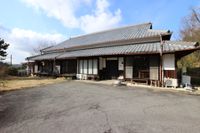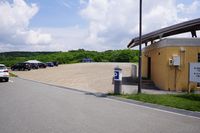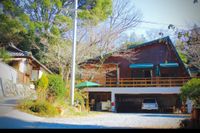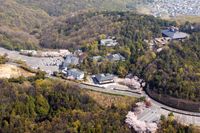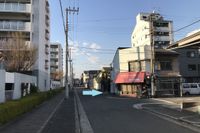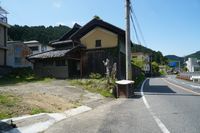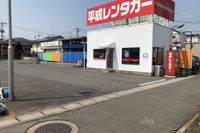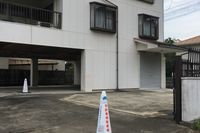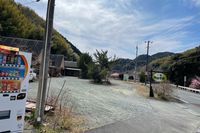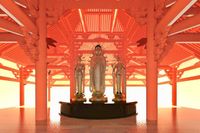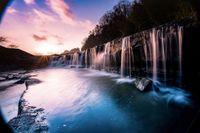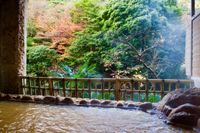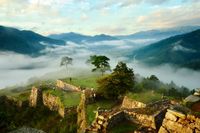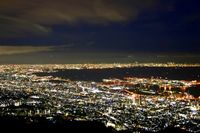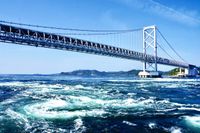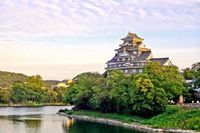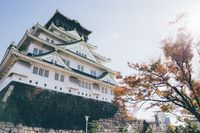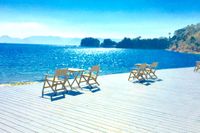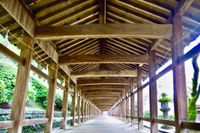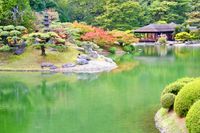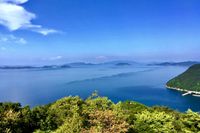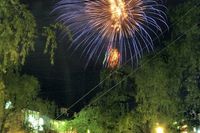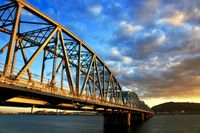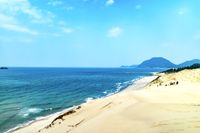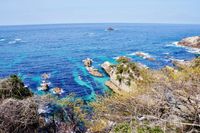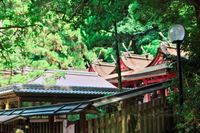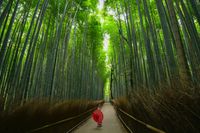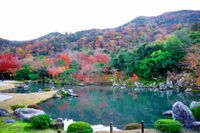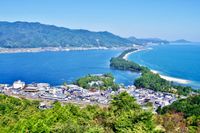Himeji Castle
兵庫県/姫路市

Description
This is Japan's only world heritage castle built in 1346 under the instruction of Akamatsu Sadanori. It is one of Japan's 12 castle towers and one of 5 registered as a national treasure in Japan. It is also known as one Japan's three greatest castles. It was expanded by its respective castle owners such as Toyotomi Hideyoshi and Ikeda Terumasa during the Sengoku era(1467-1600), to become the impressive castle that it is today. Due to its impressive white appearance, it is also known as the "White Egret castle".
Homepage
Address
Nearby Car Night Spots
ADLIV Factory Stay - Stay at the Printing Factory -
¥1,500〜
/ per nightTokushima Wakimachi Inojiri, Mima City
5.0
(1)Nearby Activities
There is no nearby activities
Ranking Stations
Vanlife BASE | 45 min. from Narita Airport / Perfect for campervan travel/A seaside town rich in nature/Japanese countryside town/welcome traveler
¥7,000〜
/ per nightChiba Koseki, Kujukuri-machi, Sambu-gun
5.0
(63)Shin Meishin Suzuka PA (inbound) RV Station Suzuka * With Power!
¥2,200〜
/ per nightMie Yamamotocho, Suzuka-shi
4.3
(157)(Bonfire BBQ) Chita Mihama Noma Beach Station
¥3,500〜
/ per nightAichi Noma, Mihamacho, Chita County
4.7
(42)Nearby Drive Spots
Jodoji Temple
This is a Shingon sect temple built in 1198 under the instruction of Chogen. The objects of worship are known as Yakushi Nyorai and Amida Nyorai and three great Buddha statues known as Amida Sansonzo, created by Kaikei are desiganated national treasures, along with Jodo do. At Mountain next to Jodoji Temple, there are around 10,000 hydrangea flowers along the path, providing a vividly colorful view.
Kurotaki Falls
This is a waterfall that runs down the Mino River. With a height of 4 meters and a width of 30 meters, the waterfall has two stages, and the area is ideal for photography particularly due to the early morning glow. The area has also been a setting for various traditional folk stories and plays.※兵庫県 黒滝の朝 © Tomato_249 クリエイティブコモンズライセンス(表示4.0 国際)https://creativecommons.org/licenses/by/4.0/
Arima Onsen
This is one of Japan's three most famous Onsen in Kobe city. It opened back in 1400, and was loved by Toyotomi Hideyoshi during the Sengoku era(1467-1600), and was known as the greatest Onsen in the Kansai region during the Edo era(1603-1868). The water at the spring is plentiful in iron, and three of the famous baths include the "Gold water", "Silver Water" and a bath known as "Taiko no Yu".※Credit:一般財団法人神戸観光局
Takeda Castle Ruins
These are the remains of the Takeda castle built by Yamana Sozen in 1431. The castle fell during the Tanba district attack of Toyotomi Hideyoshi during the "Battle of Takeda Castle" and was destroyed completely during the battle of Sekigahara. The castle was originally built at the top of Mount Koga, and due to its geographical location and stunning views, would often be shrouded in clouds, giving it the name of the "Heaven castle" or "Japan's Machu Picchu".
Mount Rokko
This is a 931 meter tall mountain in north Kobe. The sky observation deck as well as the observation area that looks down into the landscape below is named as one of Japan's three best night views, where one can see Osaka, Seto Inland Sea and Shikoku. This view is also known as "Kobe's 10 million dollar view".
Naruto Whirlpools
A bridge that connects Naruto city and South Awaji city, it is a swirling lake area that spreads from the Naruto strait. The water swirls here can reach sizes of up to 30 meters, which is said to be one of the largest in the world.
Korakuen Garden
This is one of Japan's three great parks, created in 1700 under the instruction of Ikeda Tsunamasa, as a representation of the "Genroku" culture of the Edo period(1603-1868). The garden has the "Enyotei" area as the center of the garden, where views of Okayama Castle and the surrounding area can be enjoyed. The park boasts an area of 133,000 square meters, with many amazing sites such as a Noh theatre stage, Mount Yuishin, a plum grove as well as Chishio forest.
Osaka Castle
This is one of Japan's three largest castles built by Toyotomi Hideyoshi in 1583. It was also the scene for the great battle known as "Osaka no Eki", fought between the Toyotomi clan and Tokugawa noble families after the death of Toyotomi Hideyoshi. The current castle tower was built by the Tokugawa family after the death of Toyotomi, and is known as one of the great symbols of Osaka. It is familiar to many people and is known as the "Taikohan Castle".
Naoshima Islands
This is an island in Kagawa prefecture, that is situated in the Setouchi coast. This island is in fact famous for art exhibits, and hosts many art museums and exhibits, such as the "pumpkin" exhibition of Kazuyo Kusama, and attracts many art enthusiasts from around the world.
Kibitsu Shrine
A shrine whose construction date is unknown. The main shrine God is known as Ookibitsu no Mikoto, and was revered as the great shrine of the Kibikuni area (which included Okayama, Hiroshima and parts of other areas). Ashikaga Yoshimitsy, who instructed the construction of the shrine, is said to have used the "Hiyoku Irimoya Zukuri" style, which a traditional Japanese Shinto architectural style characterized by four dormer gables, two per lateral side, on the roof of a very large main shrine. The place was designated as a national treasure and is famous for its 398 meter long passageway It is also famous for being the setting of the legend of "Ura Taiji" featured in Japanese folt tale "Momotaro(The peach boy)".
Ritsurin Garden
This is a famous park in Takamatsu city. With Mount Shiun in the background, there are 6 ponds and 13 man made mountain areas, which boasts 400 years of history. There are various seasonal flowers that bloom from the trees in this areas, making it a park that constantly changes with the seasons, and its sheer variety of flora has meant that it has become known as a park with a "new view with every step taken".
Goshikidai Plateau
This is a mountain that protrudes out into the Setouchi coast, located in Kagawa prefecture. The name originates from a Chinese legend, and there are five mountains named with the colors of red, yellow, blue, black and white, hence the name "Go-iro" which means "5 colors". The Shiromine Temple and Negoro Temple, which were recognized by the Japanese poet and author Kukai as one of the "88 holy places of Shikoku" is also nearby. The mountain and coastal area also give way to stunning views.
Kinosaki Onsen
This is an old hot spring in the northern part of Hyogo prefecture. The onsen opened 1300 years ago. It has been consistently been recorded as a highly ranked and regarded onsen. During the Meiji era(1868-1912), it was a place of healing for wounded soldiers during the Russo-Japanese war, and was also the setting for Shiga Naoya's "Kinosaki nite". It is a popular destination for those visiting the 7 hot springs along Otani River, and the willows trees along the river make for a magical landscape.
Mount Bizan
This is a mountain in the Tokushima prefecture. The name comes from the fact that it resembles the shape of an eyebrow in any perspective from which it is viewed. The surrounding area has a park, ropeway and driveway facilities. The contrasting views of the sunset along with the Yoshino River make this a particularly attractive spot for visitors.
Tottori Sand Dunes
This is a 16km coastal sand dune, the largest in Japan, situated in Tottori prefecture. The three sand dunes are lined more or less in parallel with the Japan Sea, and the second middle sand dune, known as "the horse's back" is the most famous photo spot. The area is also popular for paragliders, hangglidesr and sand boats.
Uradome Beach
This is a 15km stretch of Ria type coastline along the norther Tottori prefecture area. There are various cliffs, rock and cave formations, with various sea birds inhabiting the area. It is also known as the "Matsushima of the Sanin area" as the area is said to resemble Matsushima in Miyagi prefecture. There is also a beach area which attracts visitors looking to enjoy beach and water activities.
Hiraoka Shrine
This is a shrine that is said to have been built in 660 BC. The original shrine Gods are known as Amenokoyane no Mikoto, Hime no Omikami, and subsequently the Futsunushi no Kami(Katori Jingu Shrine) and Takemikazuchi no Mikoto (Kashima Shrine) were deified to the shrine, but where then moved to the Kasuga Taisha Shrine. Because of this, the shrine is sometimes known as the "ex-Kasuga shrine". Many important figures of their time such as Taira KiyomoriMinamoto YoshitsuneMinamoto YoritomoAshikaga Takauji and Toyotomi Hideyori visited this shrine, which possesses what is known as "an ancient sanctuary".
Arashiyama Bamboo Grove
This is a bamboo forest of around 400m in Sagano. This was an area opened by aristocrats and noblemen in the Heian era(794-1185), and this area loved by the upper echelons of society back then still exists today, around 1,000 years later. This symbol of Kyoto brings in many tourists. It is recommended that you visit in early morning or later evening to be able to enjoy at leisure.
Tenryu-ji Temple
This is a temple built under the instruction of Ashikaga Takauji in 1345, and is a branch temple of Rinzai Tenryu-ji sect head temple. It was built as a place of relaxation for Emperor Godaigo. The main object of worship is Shaka Nyorai, and is registered as a world heritage site. The area is also popular for autumn leaf viewing, as there are amazing views of the Arashiyama autumn leaf trees.
Amanohashidate
This is a 3.6 km sand dune that separates Miyazu Bay and Aso Sea from north to south and is one of the three major scenic spots in Japan. Over thousands of years, around 8,000 pine trees have grown here, and creates a mysterious landscape on the eastern side with the white sand scape. It is also said that if you bend down and look between your legs, the landscape will resemble a dragon rising up to the sky.

